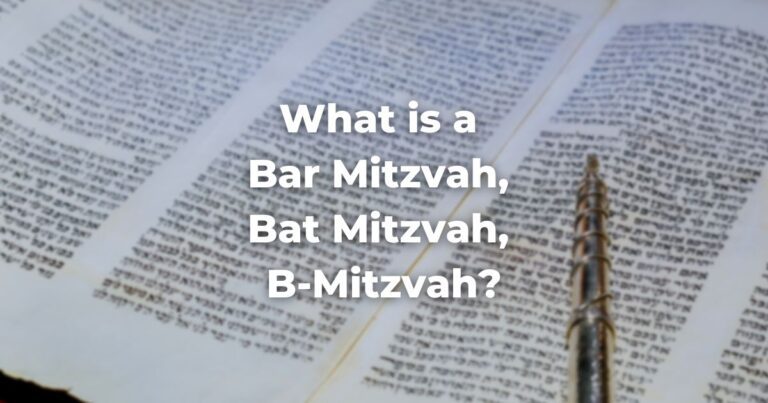The Get, the “decree of divorce,” plays a fundamental role in the Jewish life cycle of a couple whose marriage has come to an end by civil law.
To understand divorce under Jewish Law, one needs first to grasp the concept of marriage in Judaism. For some religious practices, marriage is an action associated with a divine power that it might be considered unbreakable. But from a Jewish perspective, marriage and divorce are more related to civil law.
Marriage is primarily considered a social contract, which has no divine implications. Nevertheless, there could be serious consequences of overlooking the Gittin (divorce) process and just staying with a civil law divorce.
This procedure is emotionally very intense and it is different from the civil law, as it is an ancient ritual that connects us with a very old tradition. The Get will avoid a situation of adultery, which could lead to having children being considered mamzerim (children resulting from a prohibited relation). It is also an active act of self-determination for a new beginning.
Halacha, or Jewish Law, requires that couples that get divorced by civil law and execute a Get to dissolve their Jewish marriage. A Get may be required even for those who have lived together as a couple, without a civil or religious wedding, as they might be considered as if they were married. The marital status in the Jewish tradition can be acquired with or without a ketubah (written contract), but this is only applicable to a couple where both partners are Jewish.
As it is stated in the TorahRefers to the first five books of the Hebrew Bible, the Tanakh, also called the Five Books of Moses, Pentateuch or the Hebrew equivalent, Humash. This is also called the Written Torah. The term may also refer to teachings that expound on Jewish tradition. Read more, a husband gives the divorce to his wife because the legal framework of a marriage is considered a contract of “acquisition.”
“When a man has taken a wife, and married her, and it come to pass that she find no favor in his eyes, because he has found some unseemliness in her: then let him write her a bill of divorce, and give it in her hand, and send her out of his house” (Deuteronomy 24:1).
Because of this source in the Torah, it is considered an obligation of husbands to provide a Get to their wives. Today, this approach might sound outdated and sexist, and some halachically valid alternatives are available. However, keeping the essence of the ceremony and this long lasting tradition, and at the same time making it more egalitarian, respecting both partners in an equal manner.
In Case of Get Refusal
When the husband does not agree on this, the wife can ask a Rabbi to request her husband to give her a Get. The same applies when the wife is reluctant to receive it. The rabbis should remind the couple that the Get is a religious and moral obligation, and it is an important step in moving forward in life.
The Conservative/Masorti Movement has dealt with Get refusal by adding the Lieberman Clause to the ketubah, or marriage contract, under Jewish Law. This clause stipulates that divorce will be authorized by a beit din (a rabbinic court).
This prevents a woman from becoming an agunah, the status of a woman who is linked to a man who refuses to give her her freedom or who cannot be reached to do so. This was first introduced in the 1950s by Conservative rabbis.
Another option to avoid Get refusal is by adding halachic prenup to the process called Kiddushin al tenai or “conditional betrothal.” This prenuptial agreement retroactively invalidates the kiddushin (betrothal) and the marriage if a Get has not been issued within six months after a divorce in civil court.
Get is a Two-Step Ceremony
The procedure is divided into two steps:
First, the husband orders the writing of the Get, which is written by a specialized scribe called Mesadder Gittin. The Joint Bet Din of the Conservative Movement certifies Mesadderei Gittin who are qualified for this important duty. This document is written specifically for the couple and names and nicknames are mentioned, to avoid any doubt of the identity of who is actually getting divorced.
Once the document is ready, the ceremony of the Netinat Get, “the Giving of the Get,” takes place, this is the second step. The husband, or an appointed sheliach (agent), reads the Get with a Rabbi and two others as witnesses. Within the Conservative/Masorti movement, it is preferred that the wife decides on the sheliach, in order to make the situation more egalitarian.
After the Get is read, the decree is placed in the hands of the wife, who receives it with both hands, with no rings on her fingers, so nothing will be between her hands and the document. Once she receives it, she lifts it and walks three steps towards the door, as she walks away from her marriage. From that moment she is considered “free to any man.”
The act of lifting something is the traditional way of acquiring an object by Jewish tradition. So lifting the Get is how the wife clearly and visually shows she agrees to the divorce and accepts new freedom. For the husband, signing in front of witnesses or eventually personally giving the Get to his wife, is also a powerful action and a public statement for a new beginning.
The End of a Contract
After the Netinat Get, the document returns to the Mesadderei Gittin, who keeps it safe in an archive, and writes Ptor or a certificate for each partner, to certify that the Get was properly executed. Then, a fee is paid to Mesadder Gittin for the services provided. This fee can vary from one Mesadder Gittin to another.
It is highly recommended that after a Netinat Get each partner could have a mikveh or ritual immersion to symbolically be reborn and cleansed from the pain and stress that may occur from this process.
More information about Gittin can be found here:
A New Egalitarian Divorce (Exploring Judaism)
What You Need to Know About A Get (Rabbinical Assembly)
Author
-

Journalist. Msc. in Anthropology. She was a fellow in the first cohort of the Exploring Judaism's Writer's Fellowship. South American Rabbinical Student in Europe. Mother of two fantastic daughters. Love to practice yoga, meditate and to cook for family and friends. Currently doing research on food & identity for Phd on Jewish Theology at Paderborn University, Germany.
View all posts






